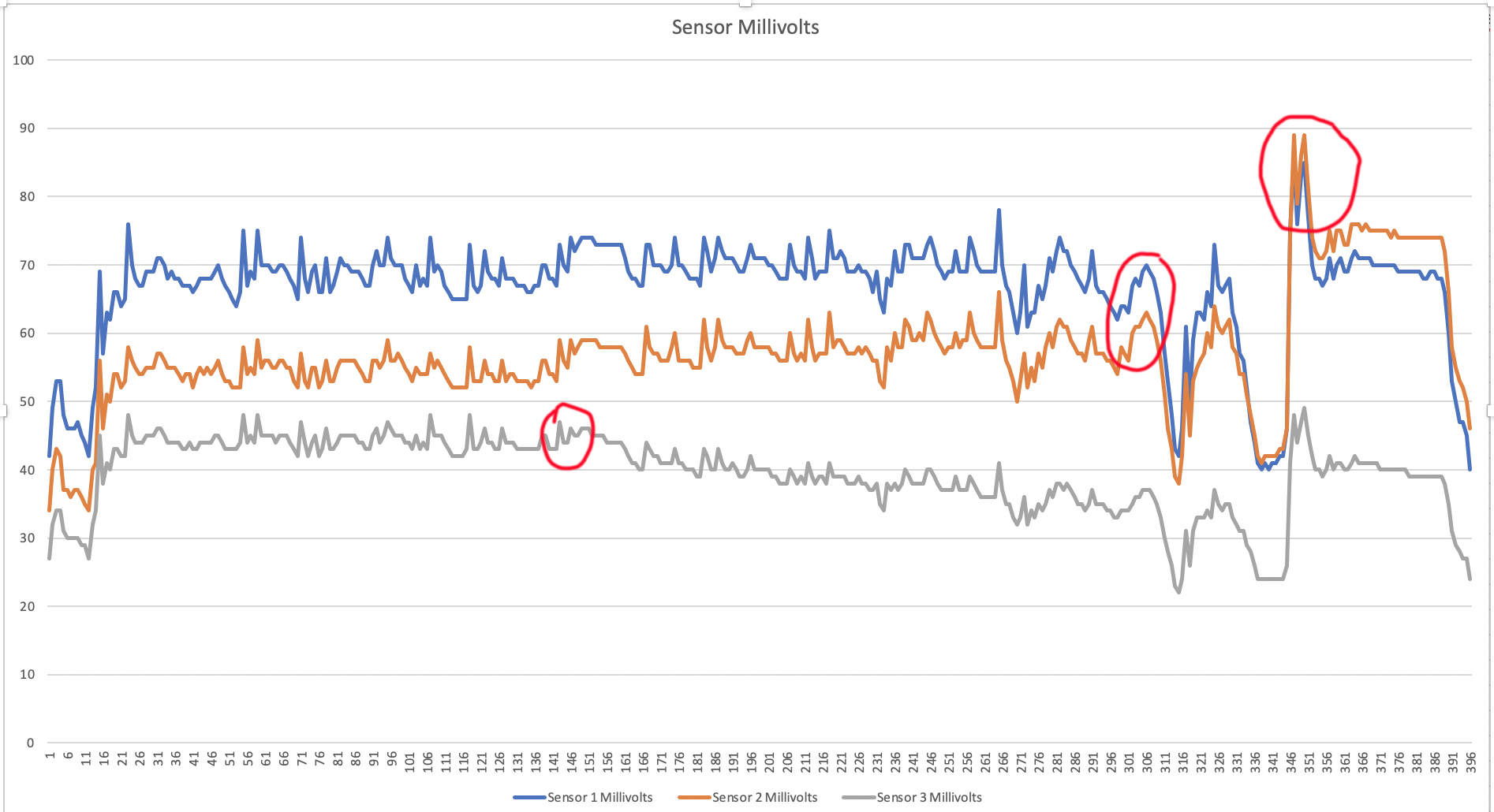I'd like to open up a discussion on AST sensors.
Attached is a graph of the mv output of 3 cells from a dive I did a couple of weeks ago. All three cells calibrated before the dive, with C1 having the greatest offset, C2 the second and C3 the lowest offset. At approximately 30 minutes into the dive, C3 started to drift, registering a lower mv output than it did at calibration, but it was still responding. Around 45 minutes into the dive, C1 also started to have an offset drift, with the off-set appearing to lower to close to the same level of C2.
The impact to me was that at this point, my Shearwater displayed three completely different PO2s. I used a DIL flush to confirm which cell was good and proceeded to abort the dive, while flying the unit on C2. On the way up, I performed an O2 flush and at this point, C2 was voted out by the Shearwater; the offsets of C1 and C3 had drifted to a point where the Shearwater thought their PO2 was close enough to each other, and it assumed C2 was the bad egg. PO2 readings were roughly 1.1, 1.7 and 1.0; the O2 flush was deep enough that 1.7 would have been the correct reading.
What is interesting is these don't seem to be acting "current limited" like we traditionally think because they are still responsive and reactive throughout the range, but rather they appear to have a drop in off-set which is used at calibration.
I'm not sure what else to think / say, I'll leave it to you to decide, but I'd probably be pretty cautious when diving these cells and be sure to confirm them with a DIL flush periodically throughout the dive and an O2 flush on the way up.
Attached is a graph of the mv output of 3 cells from a dive I did a couple of weeks ago. All three cells calibrated before the dive, with C1 having the greatest offset, C2 the second and C3 the lowest offset. At approximately 30 minutes into the dive, C3 started to drift, registering a lower mv output than it did at calibration, but it was still responding. Around 45 minutes into the dive, C1 also started to have an offset drift, with the off-set appearing to lower to close to the same level of C2.
The impact to me was that at this point, my Shearwater displayed three completely different PO2s. I used a DIL flush to confirm which cell was good and proceeded to abort the dive, while flying the unit on C2. On the way up, I performed an O2 flush and at this point, C2 was voted out by the Shearwater; the offsets of C1 and C3 had drifted to a point where the Shearwater thought their PO2 was close enough to each other, and it assumed C2 was the bad egg. PO2 readings were roughly 1.1, 1.7 and 1.0; the O2 flush was deep enough that 1.7 would have been the correct reading.
What is interesting is these don't seem to be acting "current limited" like we traditionally think because they are still responsive and reactive throughout the range, but rather they appear to have a drop in off-set which is used at calibration.
I'm not sure what else to think / say, I'll leave it to you to decide, but I'd probably be pretty cautious when diving these cells and be sure to confirm them with a DIL flush periodically throughout the dive and an O2 flush on the way up.




